Search Results for 'Mill Street'
60 results found.
Clay pipes and dúidíns
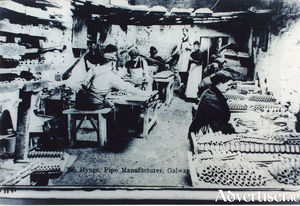
In the days before cigarettes were invented, clay pipes were very popular and could be found in most houses in the country. They were mainly used by working class people, easy to purchase, mass produced, cheap and light, and smoked by men and women. The short stemmed version was known as a dúidín or dudeen in Ireland, as a cutty in Scotland, and a ‘nose warmer’ in England. The longer version was known as the Beannacht Dé pipes or ‘The Lord ha’ mercy’ pipe, as that was how people invariably responded when you gave them one, “Beannacht Dé leat”.
Westport GAA Launch “Win A House In Westport 2”
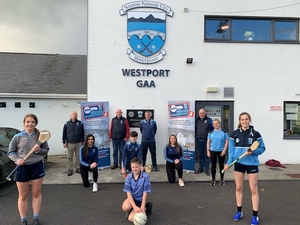
Westport GAA, organisers of the hugely successful Win A House In Westport fundraiser in 2019, have just launched their latest fundraising campaign - “Win a House in Westport 2”. The club is offering one lucky person the life-changing chance to win a home worth €325,000 for just €100, in the much-loved west of Ireland seaside town.
Father Griffin’s body found
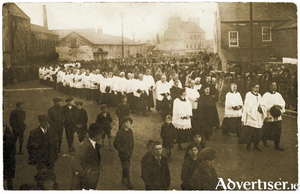
At about 3pm on the afternoon of Saturday, November 20, 1920, William Duffy of Cloghscoilte near Barna was driving cattle locally when one of them got stuck in the mud. William noticed part of a coat sticking out of the gap, so he went for his neighbours Patrick and Thomas Lydon, and later Patrick Cloherty and Patrick Concannon from Truskey joined them at what turned out to be a grave. They uncovered part of the body and realised that it was that of Fr Griffin. They decided to wait until it was dark so they covered up the body again, afraid that the Tans might return to remove it. William Duffy rode on horseback into Fr O’Meehan in Montpellier Terrace to inform him of the tragedy. Fr O’Meehan, Fr Sexton, and Canon Considine then hired Patsy Flaherty’s side car and went out to Clochscoilte.
Bria Connolly - Podomotion Podiatry Clinic

Podomotion Podiatry Clinic is owned and run by Bria Connolly, a native of Westport town. Bria qualifie from the National University of Ireland Galway with an honours degree in Podiatric Medicine.
Stone mad
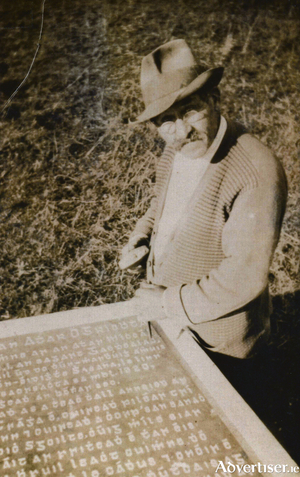
Like most towns, Galway was built using native stone and there was plenty of that around. There were black limestone quarries in Menlo and Angliham, and a limestone quarry at Merlin Park worked by the Blake family until about 1850 and later by Sibthorpes of Dublin. In about 1880, a Scotsman named Millar rented a number of quarries in the Galway area, two at Shantalla, one at Ballagh near Bushy Park, and one at St Helen’s, Taylor's Hill, where they quarried fine-grained red granite. There was a marble and granite works at Earl’s Island where one of the employees was a stonemason named Pat Fahy.
The last boat to use the canal
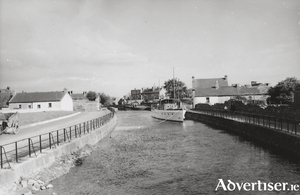
On March 8, 1848, work was started on the Eglinton Canal. The Harbour Commissioners had been anxious to develop the New Dock. There were about 300 boats in the Claddagh and the amount of seaweed landed for manure in the spring of 1845 was 5,000 boat loads, averaging three tons each. The seaweed factory had been moved up to ‘The Iodine’, so the work on the canal was vital. It would allow boats to go from the Claddagh Basin up to the lake, boats from Cong and Maam to get to the sea, and improve the mill-power on the Galway River.
Some Galway Foundry staff
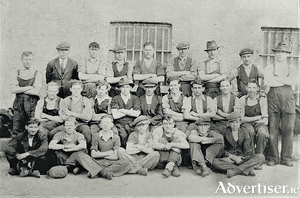
At the beginning of the last century, Beatty Brothers had a foundry in Mill Street. In 1913, they advertised ‘a desire to announce that their factory was fitted with a first-rate plant for the manufacture of spades and shovels. Tons of them were sold last season’.
Two young women and Merlin Park House
‘On Thursday last, a servant-maid at Merlin Park, the seat of Charles Blake Esq. near this town, in the act of proceeding to deliver a message which she received from Mrs Lawrence, who was then indisposed in the house, ran with so much violence against the bannisters as to cause them to give way, by which she was unfortunately precipitated to the bottom of the stairs, and killed on the spot. Every medical assistance and attention was immediately provided, but to no purpose, as the fall was so great as to have completely broken the skull in many parts.’ (Connaught Journal November 10 1823).
Balls Bridge, 1685
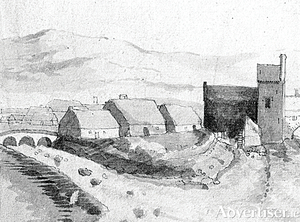
This drawing is of a detail from “A Prospect of Galway” drawn by Thomas Phillips in 1685. It shows the southern end of the middle suburb with Balls Bridge on the left, and the bit of an arch you can see on the far right was part of the West Bridge. Balls Bridge is the bridge over what is now the canal between Upper and Lower Dominick Street, and the buildings we are looking at would be the backs of Lower Dominick Street as seen roughly from across the road from where the Fisheries Tower is today. The West Bridge is where O’Brien’s Bridge is today.
Registration morning at Croí na Gaillimhe
Croí na Gaillimhe will holds its biannual registration morning on Tuesday September 10 from 10am to 12 noon. Information on this resource centre's many classes, clubs, and groups will be available on the day.

